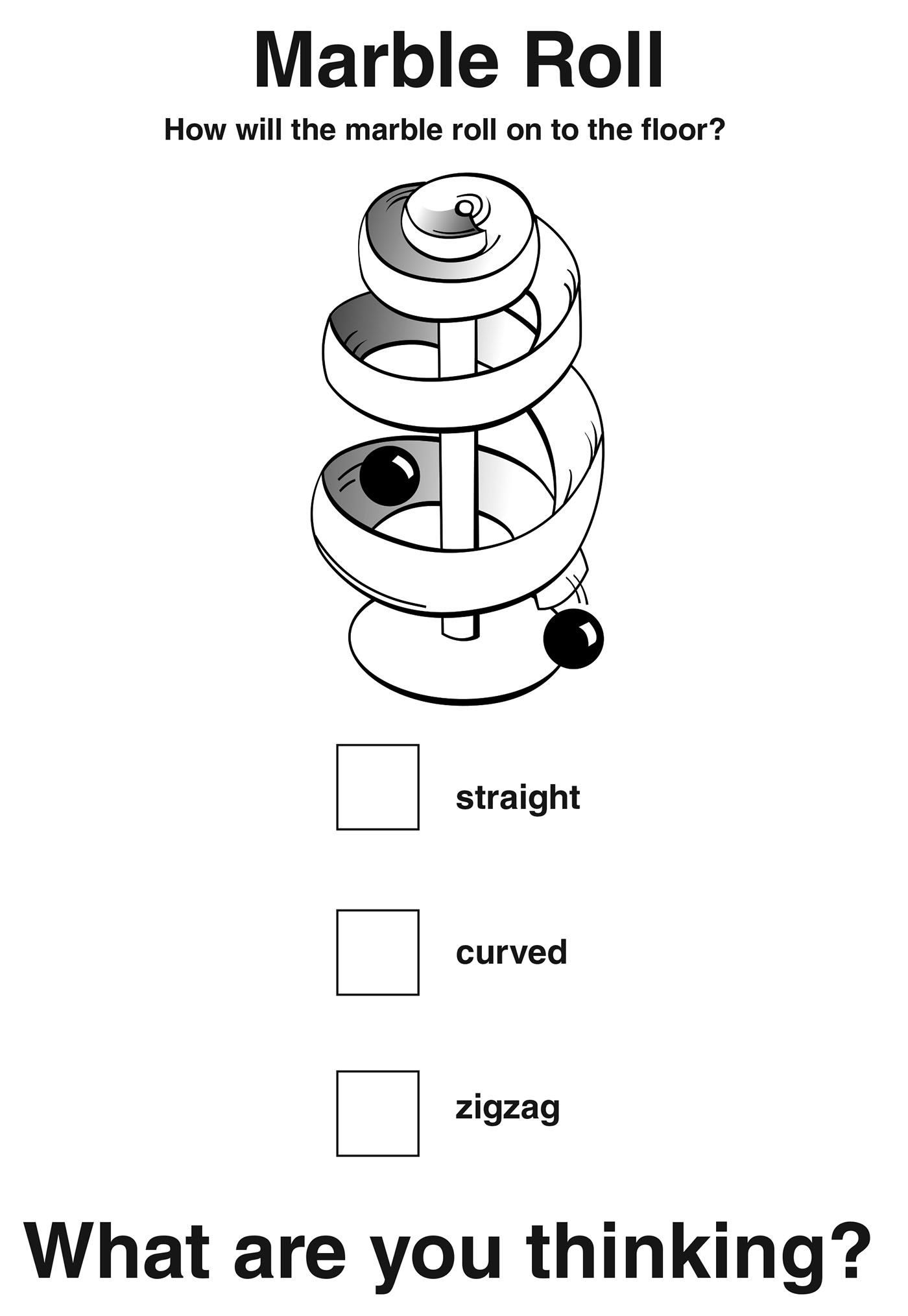Formative Assessment Probes
Formative Assessment Probes: Describing the Motion of a Marble
Staying true to the purpose of a formative assessment probe
Long before children formally learn about Newton’s first law of motion in middle school, primary students have played with marble towers, balls and ramps, winding chutes, playground slides, water park slides, toy cars moving on curved tracks, and other moving objects that travel in straight and curved paths. Their experiences during play help them observe and describe different motions they will encounter in the primary curriculum when they learn about pushes and pulls and how these affect the motion of objects. However, first they need to develop the language of motion and build a common vocabulary that can be used to describe the motion of an object, such as straight, zig zag, curved, up and down, back and forth, round and round, fast and slow, speeding up, and slowing down. Can a phenomenon used to demonstrate Newton’s first law be used with young children for a different purpose?
Researchers at the University of Leeds emphasized the need for children to develop the language tools to describe motion appropriately prior to developing an understanding of the principles that govern how objects move (Driver et al. 1994). The “Marble Roll” formative assessment probe (Figure 1) is designed to elicit students’ ways of describing motion (Keeley 2013). It is best used after students have described how objects move on straight paths. The probe also provides students with an opportunity to make a prediction, explain the reason for their prediction, test their prediction, and observe whether the outcome matches their prediction.

The best answer is “straight,” and children should draw a straight line showing the path of the marble as it rolls off the curved track. However, children of all ages commonly believe that objects moving in a curved path will continue to move in a curve after they have left a curved track.
Several years ago, I observed a first-grade classroom using this probe. Most of the students drew a rounded semi-circular path to predict how a marble would leave a marble tower. They justified their prediction by explaining that the marble would follow the same shape as the marble track. One student even described the track as “holding the marble in so it couldn’t go straight.” Some students drew “loop to loop” curves, similar to the shape of the marble tower. At first several students were not sure what the word curved meant. The teacher noticed which drawings did not match the word that was selected and helped students connect their drawings to the word that would describe the motion.
One boy spoke up that he thought the marble would go “like this” and drew a straight line to show the path. When asked why he predicted it would go that way, he described the toy race track he had at home. “When my cars go too fast around the track, they shoot off the track like this” [motions with his finger how the car goes in a straight line]. He used his everyday experience to make and justify his prediction and the teacher helped him connect his prediction to the word straight. Despite his argument, most of the students held to their prediction that the marble would move in a curved path.
The teacher asked the students how they could find out. She showed them a wide piece of clear tubing and a marble and asked how they could make a model of the marble tower to test their prediction. Several students volunteered to twist and hold the tubing so that it curved like a marble tower. When the time came to drop the marble into the curved tube, anticipation and excitement was high! One student dropped the marble in and the class watched it travel through and exit the winding tube, and then gasped as the marble moved in a straight path across the floor. The children were clearly surprised when their prediction did not match their observation; except for the boy who explained what happened when his toy race cars zoomed off the track. He responded confidently with, “I told you so!”
Naturally the children wanted to test this over and over again. The teacher let the children launch the marble several times, taking turns holding the tube in place to make a curved track. She recorded their motion words and asked for other words that could describe the motion of different objects. Next, the children described a range of different motions, including the zig zag. They figured out they could make an object zig zag by giving it a push in different directions.
What impressed me about the lesson is that the teacher stayed true to the purpose of the probe. The explanation for why the marble moved in a straight line would have exceeded the grade-level appropriateness of this probe. To explain that according to Newton’s first law, an object will remain at rest or in uniform motion in a straight line unless acted on by an outside force was not the intent of the probe. The purpose was to develop descriptions of motion to support predictions and observations of motion and learn words that can be used to describe different motions. As a reminder, the teacher notes that accompany each probe begin with a description of the purpose of a probe. The notes for “Marble Roll” state that, “The purpose of this assessment probe is to elicit children’s descriptions of motion. The probe is designed to reveal how students describe the path of a moving object as it leaves a winding track” (Keeley 2013, p. 72). Attending to this purpose will ensure that the probe provides the formative information you need to inform your instruction while simultaneously promoting learning.


